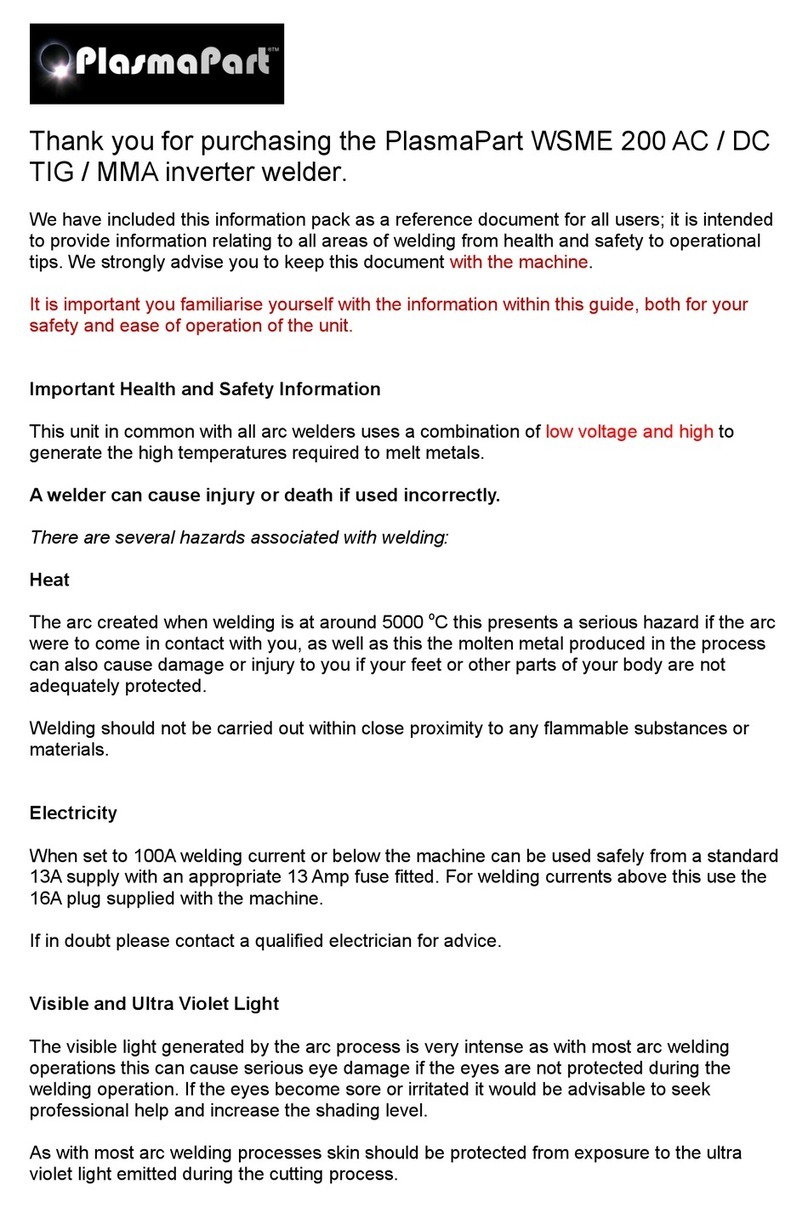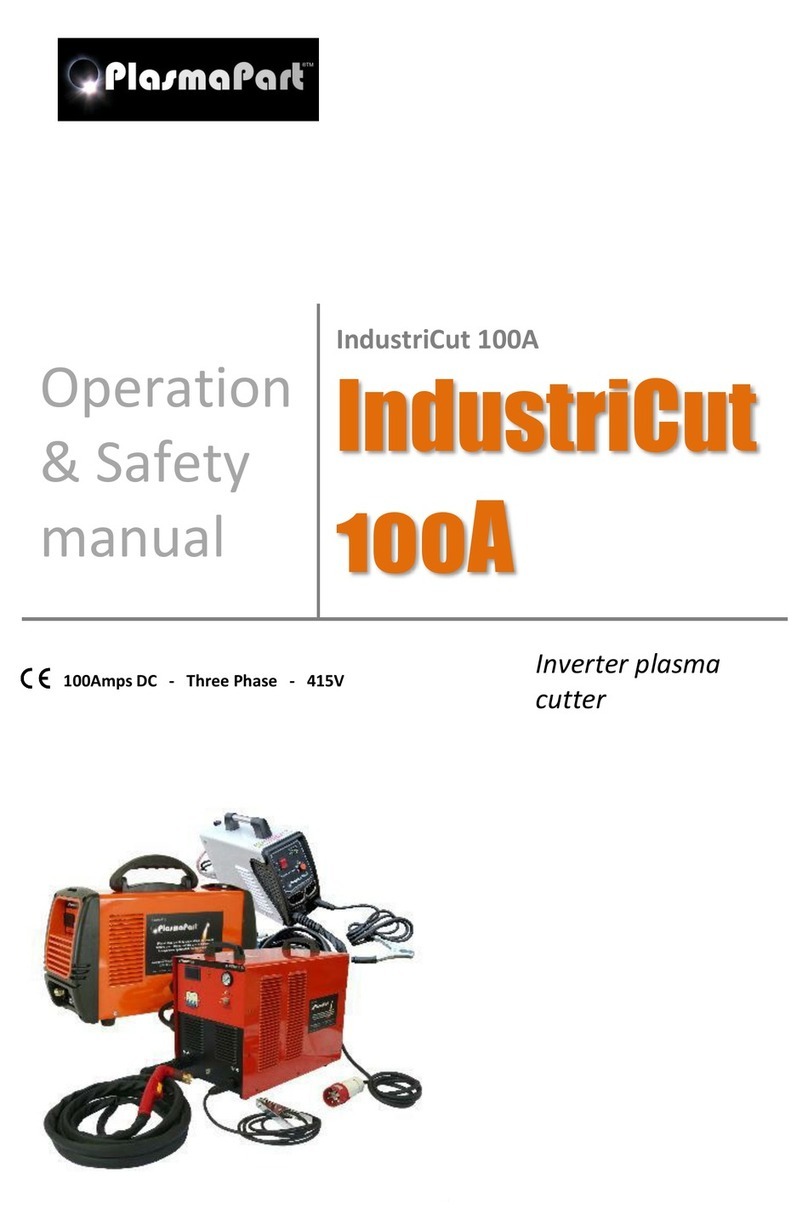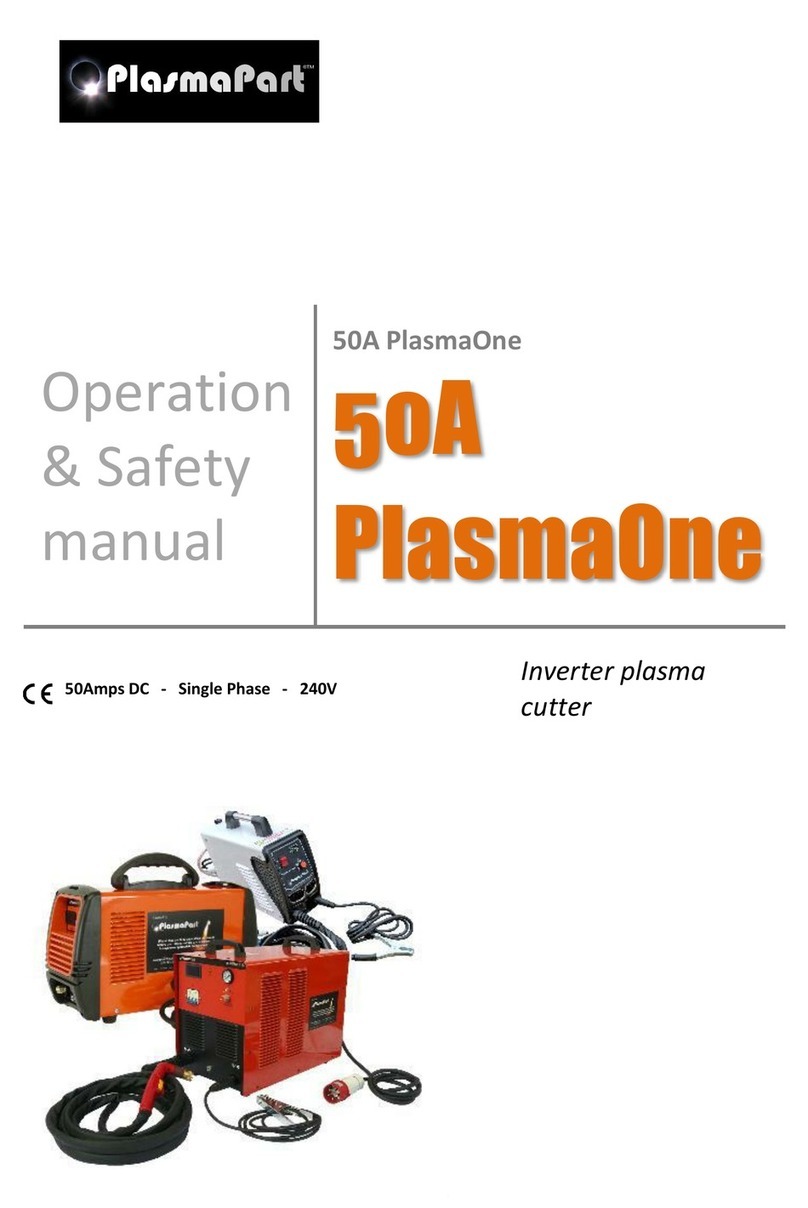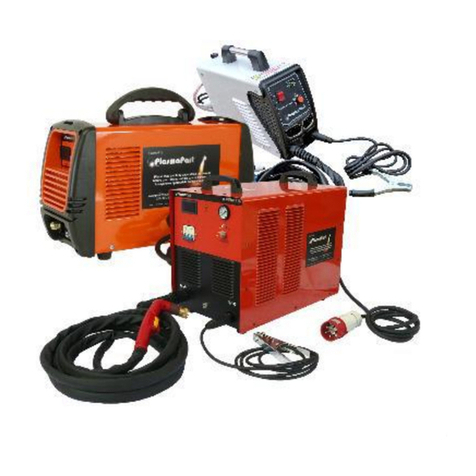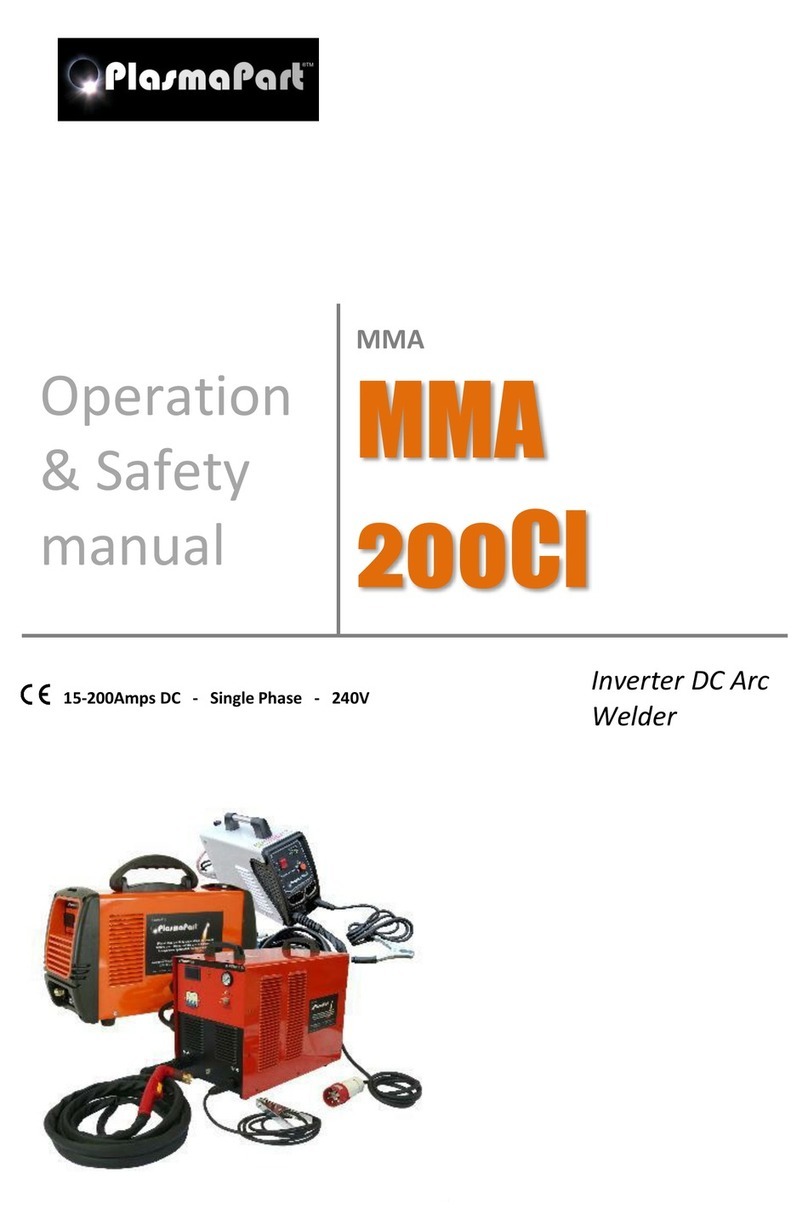4.1 The cutting current is dependent on three parameters; material thickness, speed of
cutting. (Travel speed of the torch) and standoff (distance between the cutting tip and
parent material being cut) in practice it has been found that it is easier to set a current
appropriate to the material thickness then adjust the speed of cutting to achieve the
desired result if the tip standoff is kept constant. When the correct combination is
achieved the sparks from below the material being cut will lag slightly behind the cutting
tip. Move too quickly and the sparks tend to come from above the cut and the plasma will
not penetrate all the way through the material. Moving too slowly will result in a wider cut,
heat distortion and a build-up of dross (slag) on the underside of the material. Eventually
the arc will be lost.
It is good practice to try a few cuts on scrap material where you can establish a speed of
cutting that is comfortable to achieve. The interdependence of the three parameters is
explained in more detail below.
4.2 The two terms that are commonly used to describe the quality of the cut in Plasma cutting
are Kerf (cut width) and Dross (slag).
4.3 Kerf is the width of material (perpendicular to the torch and cut axis) removed during the
plasma cutting process. Kerf is affected by two variables.
Cutting Speed
The faster travel speeds will result in a narrower kerf. The kerf will continue to narrow until
loss of penetration occurs. Slower travel speeds will result in a wider kerf until loss of arc
occurs.
Cutting Amperage
Increasing cutting amperage will result in a wider kerf. Continuing to increase current will
widen kerf until the nozzle is destroyed. Lowering amperage will result in a narrower kerf
and a more positive cut angle until penetration is lost.
Standoff is the distance maintained between the torch plasma exit hole and work-piece.
The tips supplied with your CUT 40 have a built in standoff between the plasma exit and
work piece and have been designed to remain in contact with the material being cut. If the
standoff is increased during cutting the CUT 40 has an arc voltage feedback system which
will increase the arc voltage as the standoff distance increases and widen the kerf.
Continuing to increase standoff will eventually lead to loss of cut. The unit will
electronically maintain the constant set current if the standoff distance is changed.
4.4 Dross (slag) is the excess material that spatters and builds up on the underside of the
material as you cut.
Dross occurs when the operating procedure and technique is less than optimal. It will
require practice and experience to obtain cuts without dross. Although less than optimal
cuts will contain dross, it is relatively easy to remove by breaking it off using pliers or
chipping off with a chisel.
A combination of factors contributes to the build-up of dross. These include material type,
material thickness, amperage used for the cut, speed of the torch across the work-piece,
condition of the torch tip, air pressure, etc. Do not use more output current than is
necessary and adjust speed of cut to minimise dross build-up on underside of cut. Try
carrying out further experiments adjusting current and speed to minimize dross and obtain
a satisfactory result.
